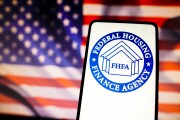
WASHINGTON — Heartland Tri-State Bank borrowed $21 million from the Federal Home Loan Bank System before it failed in July, providing
Heartland Tri-State failed after its former CEO Shan Hanes
Around the time that Hanes allegedly embezzled the funds from the bank, Heartland Tri-State borrowed about $21 million from an unnamed Federal Home Loan bank, according to
Those advances were acquired during June and July 2023, according to the report. Those kinds of advances weren't typical for the bank. In the last three years, Heartland Tri-State had not borrowed any funds from the Home Loan Bank System.
In court documents in the Hanes case, prosecutors said that the embezzlement happened beginning around May 30 and continued through at least July 7.
"The idea that a small bank could go from zero to over $20 million in FHLB borrowing in two months and not raise any flags is astounding," said Aaron Klein, senior fellow in economic studies at the Brookings Institution.
The $21 million in advances represented a significant portion of Heartland Tri-State's assets — around 15%.
"FHLB borrowing allowed the bank to lose even more money, resulting in even greater losses to the taxpayer," Klein said. "The failure of this bank is expected to cost $54 million to the [Federal Deposit Insurance Corp.], a number which is likely higher because the FHLBs are always paid back before the FDIC."
Heartland Tri-State "nearly exhausted its sources of liquidity to fund the CEO's wire transfers," the OIG report said. As of the bank's March 31 call report, Heartland Tri-State had no borrowings from any institutions. Then, as of the last week of July 2023, when the bank failed, it had used up about $24 million of its line of credit at a correspondent bank that it used to process its wire transfers, leaving only about $700,000 remaining.
Amid the regional bank crisis last March, lawmakers and other critics pointed to large advances from Home Loan banks to banks that wound up collapsing. Silicon Valley Bank, Signature Bank and Silvergate Bank were among the largest borrowers last year from the Home Loan Bank System. The three banks, two of which were shut down by regulators and one self-liquidated, received a combined $30.6 billion from the Home Loan banks last year, just months before their collapse.
Other banks that also experienced stress or failed, including First Republic Bank in San Francisco, which failed in May last year, and New York Community Bancorp, whose stock plummeted this month amid financial strain, were also among the largest borrowers from the Home Loan Bank System.
Some lawmakers,






